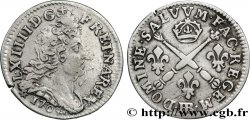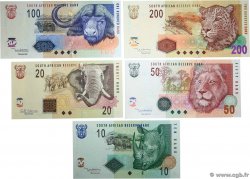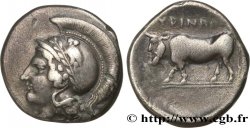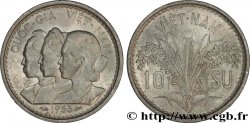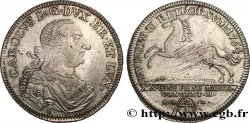Live auction - fme_412182 - LOUIS XIV "THE SUN KING" Médaille de l’arrivée en France Jacques VI
Чтобы принять участие в торгах, вы должны войти в систему и стать подтвержденным участником аукциона. Войдите, чтобы сделать ставку. Ваш аккаунт будет подтвержден в течение 48 часов. Не ждите до закрытия торгов, чтобы зарегистрироваться.Сделав ставку на данный товар, вы вступаете в юридическое соглашение на покупку выбранного товара и нажатием кнопки «Сделать ставку» подтверждаете принятие вами условий интернет-аукционов cgb.fr.
Ставка может бить сделана только в полном эквиваленте евро. Торги закроются согласно времени, указанному в описании товара, все ставки, сделанные после закрытия торгов, учитываться не будут. Не следует откладывать предложение вашей ставки до последнего момента, так как система может не успеть обработать вашу заявку, и ваша ставка не будет принята. Более детальную информацию вы найдёте здесь: FAQ по интернет-аукционам.
Все ставки победителей подлежат комиссии 18%.
Все ставки победителей подлежат комиссии 18%.
| Оценить : | 500 € |
| Цена : | Нет ставки |
| Максимальная предлагаемая цена : | Нет ставки |
| Конец торгов : | 30 January 2018 16:53:50 |
Тип Médaille de l’arrivée en France Jacques VI
Дата: 1689
Монетный двор / Город: UK, Londres
Металл: bronze
Диаметр: 59,5 mm
Ориентация осей монеты: 12 h.
Гравер SMELTZING Johannes
Вес: 89 g.
Век: lisse
Редкость: R2
Комментарии о состоянии
Intéressante médaille avec un défaut de métal au droit et une patine un preu hétérogène au homogène
Лицевая сторона
Аверс: легенда: IACOBUS II D. G. BRITANNIARUM IMPERATOR.
Аверс: описание: Buste à gauche de Jacques Stuart.
Обратная сторона
Реверс: легенда: MAGNIS INTERDUM PARVA NOCENT - REGNO ABDICATO // 4 IAN 1689.
Реверс: Описание: Renard tenant une torche dans la gueule, mettant le feu à l’arbre où est posé un aigle ; une colombe au-dessus du renard.
Комментарий
Un exemplaire en argent, frappé avec les mêmes coins que notre médaille, a été vendu 3.000 US$ dans la vente TRITON XX.
Jacques Stuart (14 octobre 1633 - 16 septembre 1701) fut roi d'Angleterre et d'Irlande sous le nom de Jacques II et roi d'Écosse sous le nom de Jacques VII du 6 février 1685 jusqu'à son renversement lors de la Glorieuse Révolution trois ans plus tard.
Jacques était le second fils du roi Charles Ier et il accéda au trône à la mort de son frère Charles II. Son catholicisme, sa politique pro-française et ses ambitions absolutistes le rendirent très impopulaire et il dut affronter une opposition de plus en plus radicale de la part de l'élite religieuse et aristocratique anglaise. Lorsque sa seconde épouse Marie de Modène donna naissance à un fils, Jacques François Stuart, laissant présager la mise en place d'une dynastie catholique, les nobles anglais demandèrent l'aide du protestant Guillaume III d'Orange, son neveu qui avait épousé sa fille Marie. Ce dernier débarqua en Grande-Bretagne à la tête d'une armée hollandaise et Jacques II fut contraint de se réfugier en France. Le Parlement considéra que cette fuite équivalait à une abdication et accorda la couronne à Guillaume et Marie qui régnèrent conjointement à partir de 1689 sous les noms de Guillaume III et de Marie II. Jacques tenta de récupérer son trône en débarquant en Irlande mais ses partisans furent défaits lors de la bataille de la Boyne en juillet 1690. Il vécut le reste de sa vie en France soutenu par son cousin le roi Louis XIV..
A silver example, struck with the same dies as our medal, was sold for 3. 000 US$ in the TRITON XX sale.
James Stuart (14 October 1633 – 16 September 1701) was King of England and Ireland as James II and King of Scotland as James VII from 6 February 1685 until his overthrow in the Glorious Revolution three years later..
James was the second son of King Charles I and he succeeded to the throne on the death of his brother Charles II.. His Catholicism, pro-French policies, and absolutist ambitions made him very unpopular, and he faced increasingly radical opposition from the English religious and aristocratic elite.. When his second wife, Mary of Modena, gave birth to a son, James Francis Stuart, heralding the establishment of a Catholic dynasty, the English nobles sought help from the Protestant William III of Orange, her nephew who had married her daughter Mary.. The latter landed in Great Britain at the head of a Dutch army and James II was forced to take refuge in France. Parliament considered this flight to be an abdication and granted the crown to William and Mary, who reigned jointly from 1689 under the names William III and Mary II.. James attempted to reclaim his throne by landing in Ireland but his supporters were defeated at the Battle of the Boyne in July 1690.. He lived the rest of his life in France supported by his cousin King Louis XIV.
Jacques Stuart (14 octobre 1633 - 16 septembre 1701) fut roi d'Angleterre et d'Irlande sous le nom de Jacques II et roi d'Écosse sous le nom de Jacques VII du 6 février 1685 jusqu'à son renversement lors de la Glorieuse Révolution trois ans plus tard.
Jacques était le second fils du roi Charles Ier et il accéda au trône à la mort de son frère Charles II. Son catholicisme, sa politique pro-française et ses ambitions absolutistes le rendirent très impopulaire et il dut affronter une opposition de plus en plus radicale de la part de l'élite religieuse et aristocratique anglaise. Lorsque sa seconde épouse Marie de Modène donna naissance à un fils, Jacques François Stuart, laissant présager la mise en place d'une dynastie catholique, les nobles anglais demandèrent l'aide du protestant Guillaume III d'Orange, son neveu qui avait épousé sa fille Marie. Ce dernier débarqua en Grande-Bretagne à la tête d'une armée hollandaise et Jacques II fut contraint de se réfugier en France. Le Parlement considéra que cette fuite équivalait à une abdication et accorda la couronne à Guillaume et Marie qui régnèrent conjointement à partir de 1689 sous les noms de Guillaume III et de Marie II. Jacques tenta de récupérer son trône en débarquant en Irlande mais ses partisans furent défaits lors de la bataille de la Boyne en juillet 1690. Il vécut le reste de sa vie en France soutenu par son cousin le roi Louis XIV..
A silver example, struck with the same dies as our medal, was sold for 3. 000 US$ in the TRITON XX sale.
James Stuart (14 October 1633 – 16 September 1701) was King of England and Ireland as James II and King of Scotland as James VII from 6 February 1685 until his overthrow in the Glorious Revolution three years later..
James was the second son of King Charles I and he succeeded to the throne on the death of his brother Charles II.. His Catholicism, pro-French policies, and absolutist ambitions made him very unpopular, and he faced increasingly radical opposition from the English religious and aristocratic elite.. When his second wife, Mary of Modena, gave birth to a son, James Francis Stuart, heralding the establishment of a Catholic dynasty, the English nobles sought help from the Protestant William III of Orange, her nephew who had married her daughter Mary.. The latter landed in Great Britain at the head of a Dutch army and James II was forced to take refuge in France. Parliament considered this flight to be an abdication and granted the crown to William and Mary, who reigned jointly from 1689 under the names William III and Mary II.. James attempted to reclaim his throne by landing in Ireland but his supporters were defeated at the Battle of the Boyne in July 1690.. He lived the rest of his life in France supported by his cousin King Louis XIV.







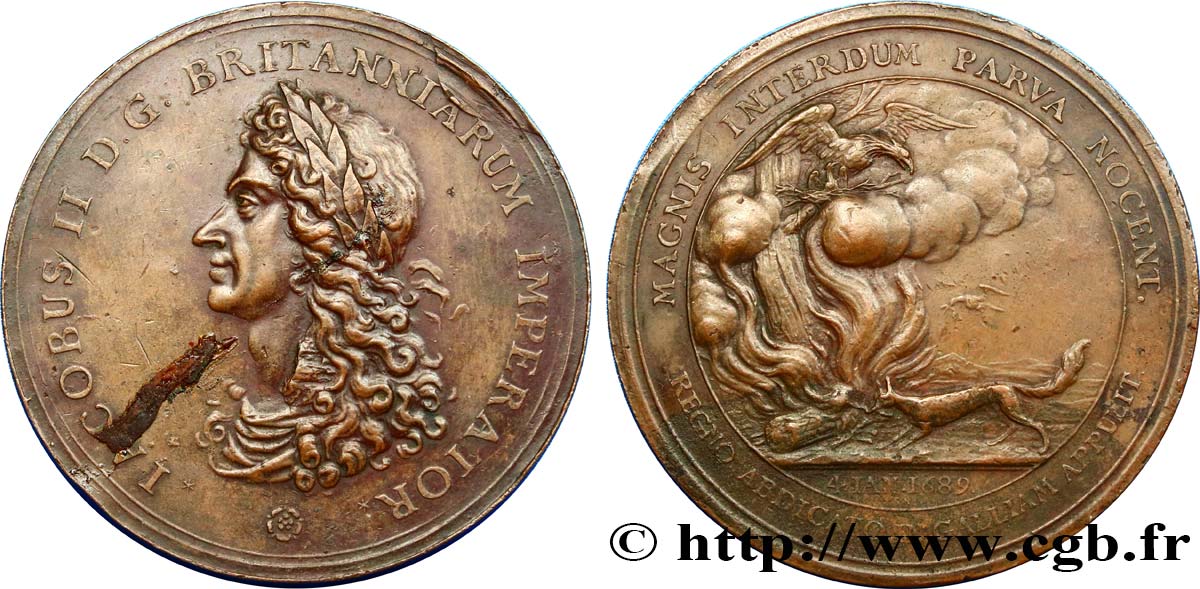
 Cообщить об ошибке
Cообщить об ошибке Распечатать страницу
Распечатать страницу Отправить мой выбор
Отправить мой выбор Задать вопрос
Задать вопрос Consign / sell
Consign / sell
 Информация
Информация



